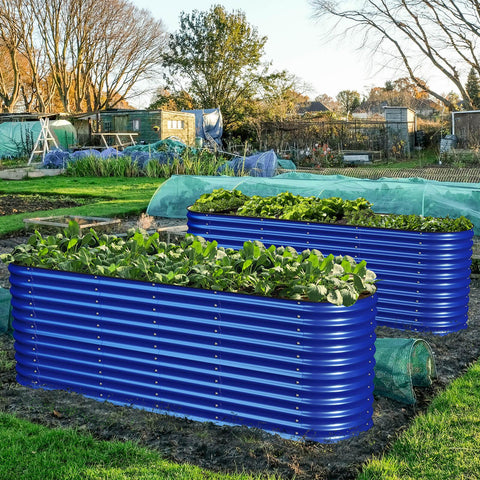Should You Still Use The Covering from One Year Ago | Olle Garden Beds
Mulching is a good way to make plants healthier and improve the soil. However, you may make many mistakes when covering, so the disadvantages may outweigh the advantages in the end. For example, is using one year old mulch a bad idea for gardening? Read here are some things that you should know when It comes to Olle Garden Beds!
As long as it is properly stored and has not deteriorated, you can still use the cover from one year ago. However, if the mulch deteriorates, it may cause damage to plants. If the original feeling is retained, the remaining covering from the previous season can be used.

Can I use the covering one year ago?
Covers from one year ago can be used as long as they are correctly bagged and stored without deterioration. You can reuse the cover used in the previous season if it retains its original look and feel and does not decompose too much.
Bagged coverings (usually bark) can be stored for one year, provided they are properly stored. Ventilation is essential to maintain the health of the cover, as oxygen slows the decomposition process.
If your cover comes in without any air holes, please poke the bag and make some by yourself. You can use plastic containers with vents for better results. For best results, place the cover on a tarpaulin and store it in a dry place.
If you have annual mulch left on the annual plant bed, you may wonder how to handle it, or whether you can reuse it. Generally, annual plants are covered in autumn to protect them from harsh winter conditions. If the cover does not decompose too much in spring, you can still use it.
If the cover decomposes too much, it is likely to be indistinguishable from the soil because it has been decomposed into fine particles. In this case, it is no longer as effective as the cover and should be replaced.
However, if it still looks and feels the same as when you first used it, you may use it again. To reuse, rake the mulch away when applying compost to the plant bed, and then put the mulch back in place.
How to judge whether the cover is damaged
You can look for several signs to determine if your cover is deteriorating. The following are some signs of metamorphic cover:
- The cover is infected with insects. Sometimes, annoying insects even enter the best storage places. If you find bugs crawling all over the cover, it's better to throw it away and buy a new bag.
- The covering is infected with mold or fungus. The covering is easy to be affected by slime molds, which initially show bright colors, but dry and turn brown. The covering can also grow artillery fungi with spores, which look like tar spots. Fortunately, you can easily remove spores.
- The covering smells bad. Sometimes, the covering smells like rotten eggs, vinegar or sulfur. This occurs when the cover begins to decompose without obtaining sufficient oxygen. You can solve this problem by spreading the cover into a thin layer and soaking it in water.
Poor mulch may be harmful to plant health, so it must be ensured that the mulch does not deteriorate before use.

How to use old coverings
If you are sure that your cover is too old or rotten to use, you can still use it. If the mulch is not stained, you can use it as a compost or soil conditioner. Soil improvers are various elements that you can add to the soil, such as fertilizers and fertilizers, to help improve plant health.
You can also add old mulch to the compost. To make compost, stack all compostable materials in the compost bin and keep watering. The microbes then break down the pile and help the material break down.
In addition to the old mulch, you can also use the following mulch in composting:
- Feces of chickens, cattle, cows and cattle
- Chopped leaves
- Sawdust
- Grass cuttings
- Potato peel
- Coffee grounds
- Adding this material to the soil can improve its health and fertility, so as to obtain better harvest and flowering every spring.
- If you do not want to use old mulch as a soil conditioner, you need to pack it and take it to a waste management facility. If your old cover shows any signs of disease or infestation, you should deal with it and get a new cover.
How to make covers
If you do not want to buy bagged coverings, you can use the following materials to make your own coverings at a cheaper price:
- Cut branches and pine needles.
- Chopped leaves. You can use a lawn mower or hedge trimmer to cut leaves.
- Grass dust. Just make sure your grass is pesticide free before using it as a cover.
- Straw
- Aged compost
- Teared, damp newspaper
If you can't use the cover for one year, making your own cover can help you save time and money.
Conclusion
Proper mulch provides many health benefits for plants, trees and shrubs, but if the mulch you use has deteriorated, you may bring some serious problems to your plants. Generally, bagged coverings from one year ago can be used if stored properly and not deteriorated. You can also reuse the cover you used last season if it retains its original look and feel.
